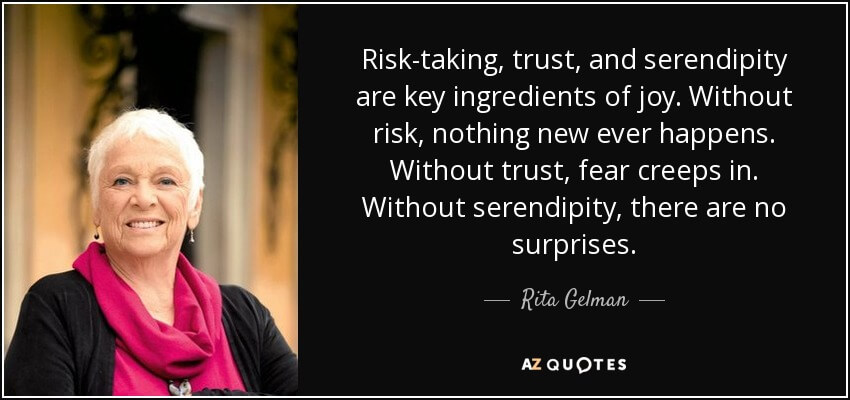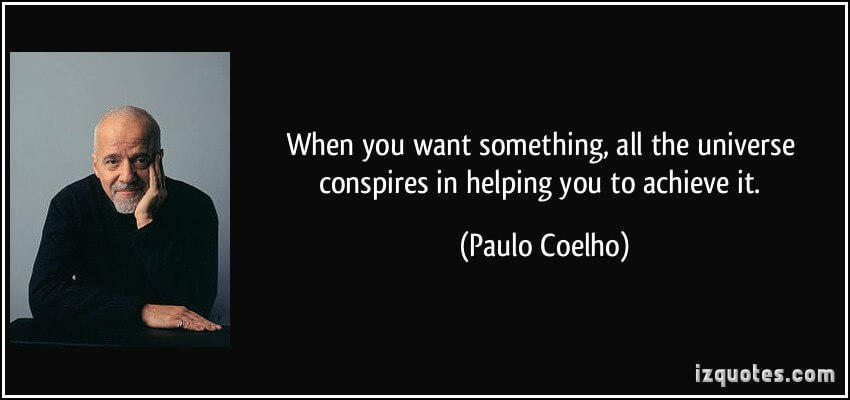
“Risk-taking, trust, and serendipity are key ingredients of joy. Without risk, nothing new ever happens. Without trust, fear creeps in. Without serendipity, there are no surprises.”
~ Rita Golden Gelman
A friend shared this with me the other day. I love it !
Allow me to muse on this for a while, then link it into leadership.
Much of my professional and personal life is centred around Purpose, around the WHY of a country, a government body, agency, business, individual, and (of course) myself.
Many walk through life without clarity of their “WHY”, so it is of huge value to have that “North Star”, to know “I’m heading in that direction”.
One thing to be aware of, however, is that it is easy to drop from WHY straight to HOW and to look to therefore exert too much control over that path towards your North Star, to choose the route, method of transportation, schedule and speed of travel.
Be careful.
Control can be of value to create structure, stability, certainty.
However, too much control and we lose the ability to #Flow, to allow for serendipity, so I love the quote from Rita Golden Gelman as a reminder to find balance between Control and Trust.
A favourite phrase of mine is that, on a personal level, I like to have only enough “Structure to allow Flow”. I consciously “control” certain elements of my life so I feel I have freedom to flow.
From Rita’s quote, she talks about trust, taking risks, allowing serendipity.
Serendipity is a word that some may call luck or coincidence. Perhaps, but I don’t believe in luck, I don’t believe in coincidence.
I believe in serendipity.
Perhaps it is a combination of clarity of purpose and creating the environment (both in structure and in belief and energy) to both allow serendipities to emerge and for you to see them in front of you and choose to make them part of your journey.
As Paolo Coelho said (and I wrote around this again a few days ago) :

Thank you for allowing me to muse….
Now, linking this to leadership…
The other day I had a stimulating conversation with a very bright young manager at a global bank as we were at an event and watched an inspiring mutual friend take risks, trust themselves and, in so doing, achieve something remarkable.
This bank, more than almost any other, was massively impacted by the global financial crisis a decade ago. They went from being globally trusted and a source of pride to many, right to the other end of the scale. A pariah, not trusted. Employees went from being proud to work there to not wanting to tell anybody where they worked.
As that last decade has passed there are signs of recovery in that business, yet they still (for understandable reasons) sit with much fear, control, scarcity within the organisation.
Regulation, compliance, risk assessment, “regulatory risk and oversight”, credit lending that has swung the pendulum to being the most restrictive I’ve seen in the several decades of my career with active involvement in financing businesses, projects, initiatives.
Fear still is much stronger than Trust in banking.
So, as I talked with this bright and energetic young leader about innovation, disruption, technology, they asked for my thoughts around whether their bank could compete and even lead in this rapidly changing world.
My take, which is illustrated beautifully by the Rita Gelman quote above, is that much more trust is needed in order to take risks and so as to allow serendipity.
A bank can invest massively in projects, innovation labs, startups, sponsor incubators, accelerators, innovation labs etc, train their people again and again on behaviours needed to innovate etc.
However, unless the entire organisation, from the top down (an emotive phrase I repeatedly use is “the fish rots from the head”) shifts from a paradigm of fear and control to one of trust that allows for risk and serendipity, much of the investment they are making will be lost, hence they will struggle to compete and to lead.
Purpose is key to creating this level of trust. Banking leaders must also choose to Trust their people deeply and freely. Yes, an element of balance is needed, particularly in banking (not only are the banks fear base, but the regulators and public are too!), and it is critical that such leaders do ensure they allow a balance of Control and Trust, of Structure to allow Flow. Allow risk, allow serendipity, Trust you will reach the North Star and that you don’t have to know the route or the method of transportation!
